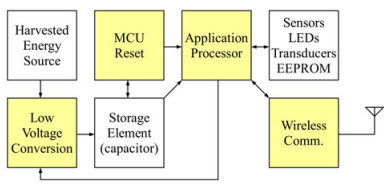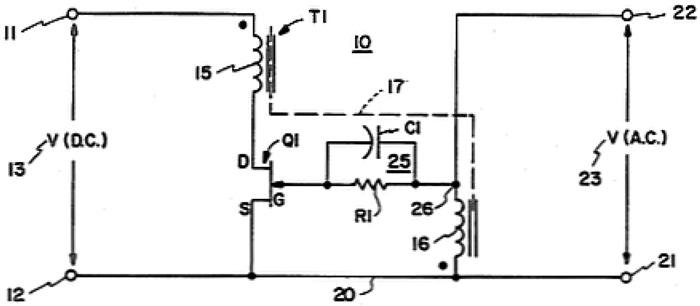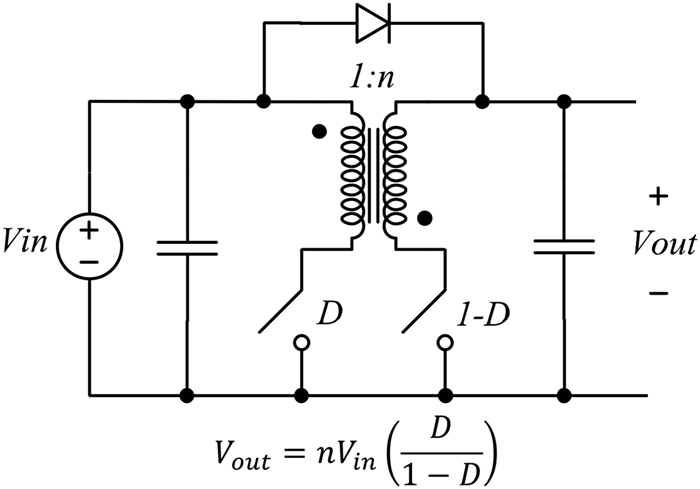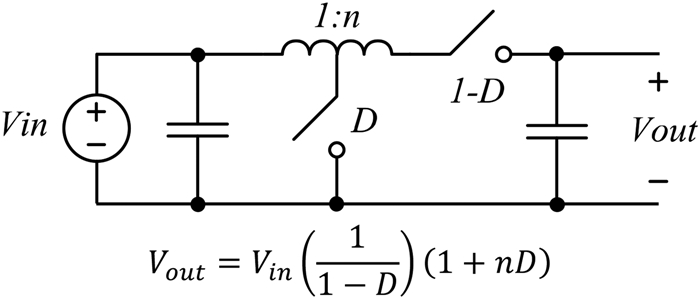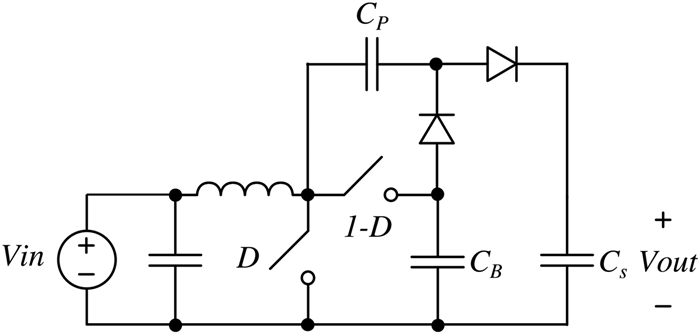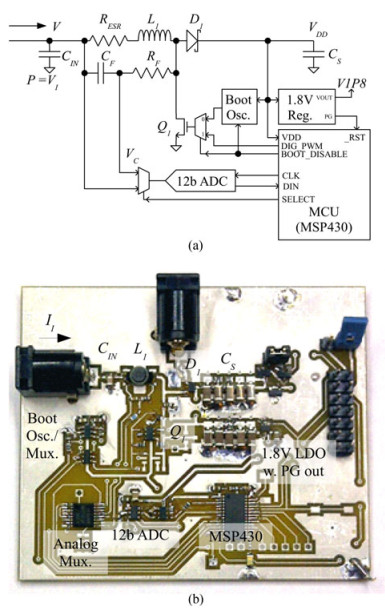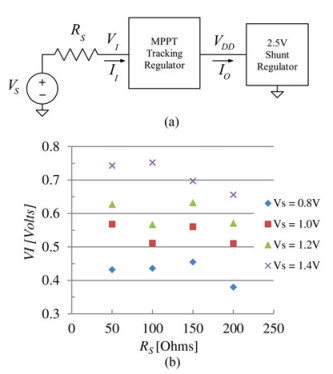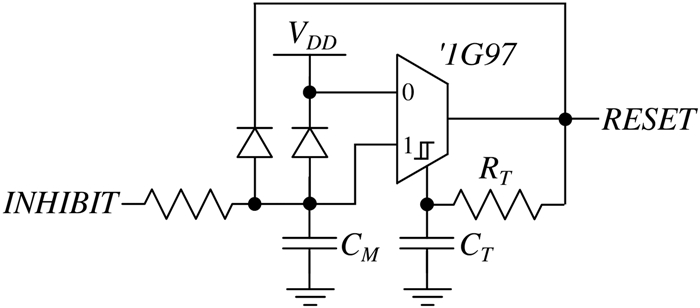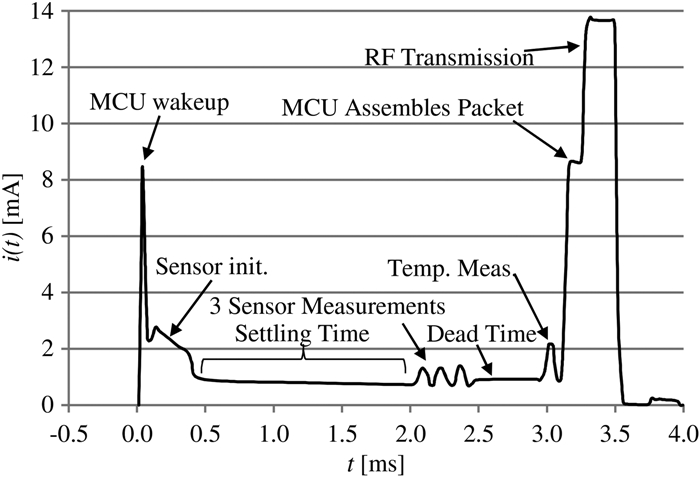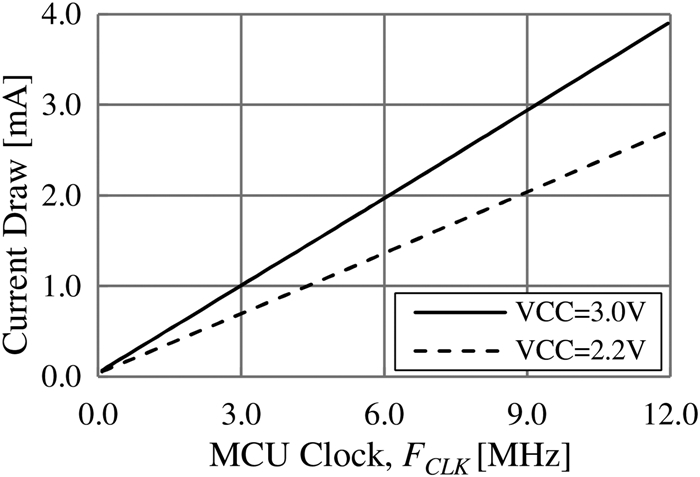-
About this article
Cite this article
Dunbar S, Popović Z. 2014. Low-power electronics for energy harvesting sensors. Wireless Power Transfer 1(1): 35-43 doi: 10.1017/wpt.2014.5
Low-power electronics for energy harvesting sensors
Abstract: This paper addresses low-power, low-voltage electronic circuit requirements for wireless sensors with energy harvesting. The challenges of start-up for micro-controller unit (MCU)-based energy-harvesting platforms is discussed where a transient, low-voltage (20–1000 mV), low-power (< 100 μW) source having a relatively high source impedance (possibly > 500 Ω) is used. Efficient converter circuitry is required to transform the low-voltage output from the source to a level suitable for typical electronic devices, 1.8–5 V, and a prototype is demonstrated in the paper. Owing to the limited energy available to deliver to the storage element, the converter output voltage typically has a slow rising slew rate that can be a problem for MCUs. This necessitates a reset circuit to hold-off operation until a level high enough for reliable operation is achieved. Once operational, Maximum Power Point Tracking (MPPT) extracts peak power from the harvester while simultaneously tracking the transient nature of the source. In this low-power application, MCU programming needs to be efficient, while otherwise keeping the MCU in the lowest power standby mode possible to conserve energy. In a fully integrated design, a single MCU may be used for the sensor application, power management, power conversion, and MPPT functions.
-
Key words:
- Energy harvesting /
- MPPT /
- Rectenna /
- Scavenging









 Steven Dunbar received the BSECE degree from the University of Colorado, Boulder in 1992 and the MSEE degree from the University of Texas, Arlington in 1996. He is now pursuing the Ph.D. at the University of Colorado. He was previously employed by Motorola, Inovonics Wireless Corporation, and RF Micro Devices, and is currently employed at Texas Instruments as a Field Applications Engineer. He is a licensed Professional Engineer (PE) in the State of Colorado, and holds two US Patents.
Steven Dunbar received the BSECE degree from the University of Colorado, Boulder in 1992 and the MSEE degree from the University of Texas, Arlington in 1996. He is now pursuing the Ph.D. at the University of Colorado. He was previously employed by Motorola, Inovonics Wireless Corporation, and RF Micro Devices, and is currently employed at Texas Instruments as a Field Applications Engineer. He is a licensed Professional Engineer (PE) in the State of Colorado, and holds two US Patents.  Zoya Popović received the Dipl. Ing. degree from the University of Belgrade, Serbia, in 1985, and the Ph.D. degree from the California Institute of Technology, in 1990. Since then she has been with the University of Colorado at Boulder, where she is currently a Distinguished Professor and holds the Hudson Moore Jr. Chair in the department of Electrical, Computer and Energy Engineering. Her research interests include high-efficiency, low-noise, and broadband microwave and millimeter-wave circuits, active antennas, applications of microwaves in medicine, and wireless powering for batteryless sensors. She has graduated 50 Ph.D. students, was the recipient of the 1993 and 2006 IEEE MTT-S Microwave Prizes for best journal papers and Distinguished Educator award in 2013. She received the 1996 URSI Issac Koga Gold Medal, a 2000 Humboldt Research Award from the German Alexander von Humboldt Stiftung, and was named an NSF White House Presidential Faculty Fellow in 1993
Zoya Popović received the Dipl. Ing. degree from the University of Belgrade, Serbia, in 1985, and the Ph.D. degree from the California Institute of Technology, in 1990. Since then she has been with the University of Colorado at Boulder, where she is currently a Distinguished Professor and holds the Hudson Moore Jr. Chair in the department of Electrical, Computer and Energy Engineering. Her research interests include high-efficiency, low-noise, and broadband microwave and millimeter-wave circuits, active antennas, applications of microwaves in medicine, and wireless powering for batteryless sensors. She has graduated 50 Ph.D. students, was the recipient of the 1993 and 2006 IEEE MTT-S Microwave Prizes for best journal papers and Distinguished Educator award in 2013. She received the 1996 URSI Issac Koga Gold Medal, a 2000 Humboldt Research Award from the German Alexander von Humboldt Stiftung, and was named an NSF White House Presidential Faculty Fellow in 1993 


